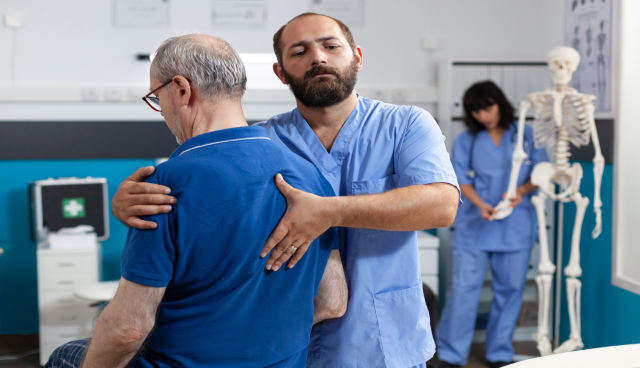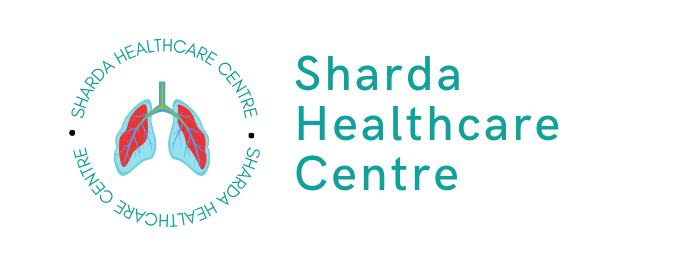
Managing Life with Pott's Spine: A Patient's Guide
The good news is that with modern medical treatments, Pott’s spine can often be cured before it causes permanent damage. Even if paraplegia or other complications have already set in, all hope for recovery is not lost. By understanding Pott’s spine, adhering carefully to treatment protocols, implementing lifestyle adjustments, and utilizing an extensive support network, it is possible to manage life with Pott’s disease.
What is Pott’s Spine and How Does it Develop?
Identifying Common Symptoms of Pott’s Spine
- Back Pain – Damage to vertebrae often manifests first as middle or lower back pain, particularly with movement or activity. Pain may range from mild to severe.
- Spinal Deformities – Weakening of the spine can lead to exaggerated spine curvature (gibbus formation), a hunchback appearance, or slight loss of height as compressed vertebrae cause settling.
- Leg Weaknesses or Partial Paralysis – Infection advancing toward the spinal cord irritates nerves and slowly robs control over leg muscles, impairing mobility.
- Numbness – Compressed or inflamed spinal nerves can also produce tingling or numbness in the legs or feet as a common early neurological symptom.
In children or teens with Pott’s disease, stunted growth or unexplained fevers may also raise red flags warranting spinal examination. Caregivers must remain alert to these symptoms and promptly schedule confirmatory testing when Pott’s spine enters the differential diagnosis. Early detection and treatment affords the best outlook.
Securing an Accurate Diagnosis of Pott’s Spine
- Medical History & Physical Exam – Documentation of any prior TB exposure, sites of infection, duration of symptoms, back tenderness on palpation, gait, leg strength, neurological performance, etc. helps distinguish possible Pott’s disease.
- Lab Tests – Blood tests check for elevated white cell count, protein levels, inflammatory markers, or TB antibodies indicating active spinal infection.
- TB Skin or Sputum Test – Skin reaction from PPD tuberculin or identification of TB bacteria in a sputum sample signals infection somewhere in body which prompts further spinal imaging.
- Spinal X-ray – X-rays often first suggest spinal TB by revealing vertebral erosion, collapse, or abnormal curvature/angulation. Follow-up imaging defines infection site(s).
- CT or MRI Scans – Cross-sectional CT or MRI spinal imaging confirms bony destruction and clearly depicts abscesses or cord compression, guiding biopsy and surgery if necessary.
- Biopsy – In rare ambiguous cases, surgeons may perform needle biopsy to extract tissue for microbiological culture, providing definitive proof of TB bacteria actively infecting spine or epidural space.
Reviewing Treatment Options for Pott’s Spine Patients
- Antibiotic Medications – First line antibiotics like isoniazid, rifampin, pyrazinamide, and ethambutol directly attack TB bacteria over 6-9 month regimen if sensitive profile.
- Corticosteroid Medications – Steroids help control inflammation and edema around spinal cord lesions that contribute to neurological symptoms in the first weeks of TB treatment. Tapered off after several weeks.
- Back Braces – Rigid back braces immobilize involved vertebrae to facilitate healing, prevent deformity progression (gibbus), and support posture/spine alignment. Often recommended for 3-6 months along with activity modification.
- Surgery – Urgent surgery is rarely mandatory but may be utilized in some cases to drain expanding abscesses causing acute spinal cord compression and rapid neurological decline refractory to antibiotics or possibly stabilize spine in danger of imminent collapse/deformity. Otherwise, medical management remains standard.
- Paralysis Therapy – If partial or complete paraplegia manifests, whether at diagnosis or during or after treatment, mobility rehab and physical therapy aim to recover strength and function to maximum degree possible.
Preventing Further Spinal Damage and Paraplegia
- Take all anti-TB medications consistently for the entire typical 9+ month course as directed. Never skip or stop treatment prematurely; completing full course prevents recurrence. Report any medication side effects.
- Attend all follow-up clinical and radiographic testing to enable doctors to monitor infection healing, spine status, and stability. Report any new or worsening symptoms immediately.
- Wear back brace as directed to promote healing and prevent vertebral collapse/spinal deformity worsening which further endangers spinal nerves/cord tissue and risks paraplegia.
- Avoid lifting, bending, straining, sports, rough activity that could jostle spine and slow bone repair. Take prescribed rest periods. Light walking short distances generally approved.
- If prescribed, attend every paralysis/mobility therapy session possible to strengthen muscles, recover nerve function, retrain gait, boost independence over time. Trying to navigate weakness long-term without assistance risks further injury.
- Diligently following expert protocols offers the greatest odds of controlling Pott’s disease, allowing TB infection to fully resolve without residual spine damage or permanent paraplegia. But if chronic issues do emerge, proactively managing symptoms becomes pivotal.
Tackling Pain and Neurological Symptoms
- Monitor Pain – Track pain locations, triggers, quality (sharp, aching), and severity (1-10 scale) to recognize patterns and most effective relievers.
- Over-the-Counter Medication – Docs may suggest OTC NSAID pain relievers like acetaminophen or ibuprofen during healed infection if significant back/leg pain persists.
- Heat/Cold Therapy – Alternating warm compresses and ice packs may ease spinal muscle tension and residual inflammatory nerve irritation for symptom relief.
- Physical Therapy – Working with PTs lifts heavy symptom management burden using various techniques like spinal traction, joint mobilization, therapeutic massage, assistive devices.

- Low-Impact Exercise – As spine fusion occurs, light yoga, swimming, tai chi for spine mobility may help build strength and conditioning to better support spine, reducing pain.
- Healthy Diet – Anti-inflammatory nutrition high in omega-3s from fish, turmeric, greens, berries may assist spinal healing and neuropathic pain relief.
- Positive Mindset – Patients feeling overwhelmed may benefit from mindfulness, meditation, counseling for acceptance, coping skills for residual chronic limitations like Pott’s paraplegia requiring long-term adaptation.
While small setbacks occasionally strike during recovery, focusing on achievable health goals one day at a time typically smooths the journey – especially with ample support.
Maintaining Mobility and Independence
- Mobility Aids:
- Walkers, canes – improve balance, ease weight on spine
- Leg braces – stabilize weak limbs for ambulation
- Wheelchairs – for respiratory muscle weakness if too fatiguing to walk far
- Electric scooters – conserve energy with battery powered mobility
- Living Spaces:
- Grab bars, railings – ease transfers, prevent dangerous falls
- Ramps, wide halls – accommodate equipment wheels
- Reachers – pick up items off floor without bending spine
- Raised toilet, tub seats – support safe seated transfers
- Accessible kitchen amenities – work from seat level
Ask doctors to connect patients with hospital OTs and home health networks able to fully evaluate environment/tasks and recommend tailored mobility equipment and home modifications for maximizing physical function available despite limited spine health. Although living with paraplegia profoundly transforms independence, implementing individualized paralysis management strategies prevents injury and dignifies one’s highest level of safe activity possible.
Seek Out Support Networks and Resources
Perhaps most influential, living fulfilling lives with Pott’s disease greatly benefits from sharing personal experiences, struggles and triumphs with others facing the same diagnosis. Seek out both informational foundation resources and emotional support groups, like:
- Orthopedic Research Centers – Major hospitals researching and treating Pott’s spine can connect patients to emerging treatment advances and clinical trials.
- Outpatient Rehab Networks – Partnering with PT/OT rehab networks aids the transition home and beyond initial hospitalization, ensuring continuum of best care.
- Paralysis/Disability Associations – Groups like the Christopher and Dana Reeve Foundation or American Disabled for Attendant Programs Today provide advocacy, assistance funds, adaptive local activities, peer support.
- Online Patient Communities – Facilitate bonds with fellow patients for empathy and knowledge exchange about practical mental health and disability coping tools.
Remember, while Pott’s spine presents challenges, patients leveraging all available medical therapies, assistive equipment, home/work modifications and peer communities can continue pursuing their passions in family, careers, and life. Discuss all worries and needs with your support team and remain hopeful.
